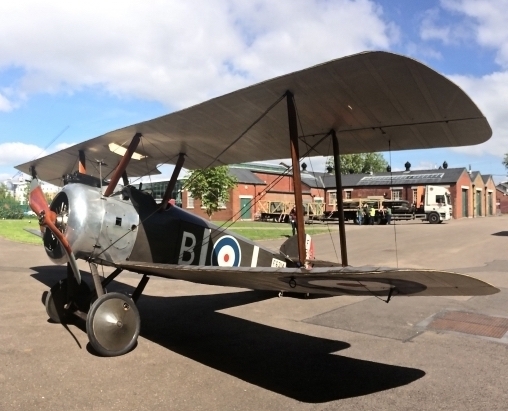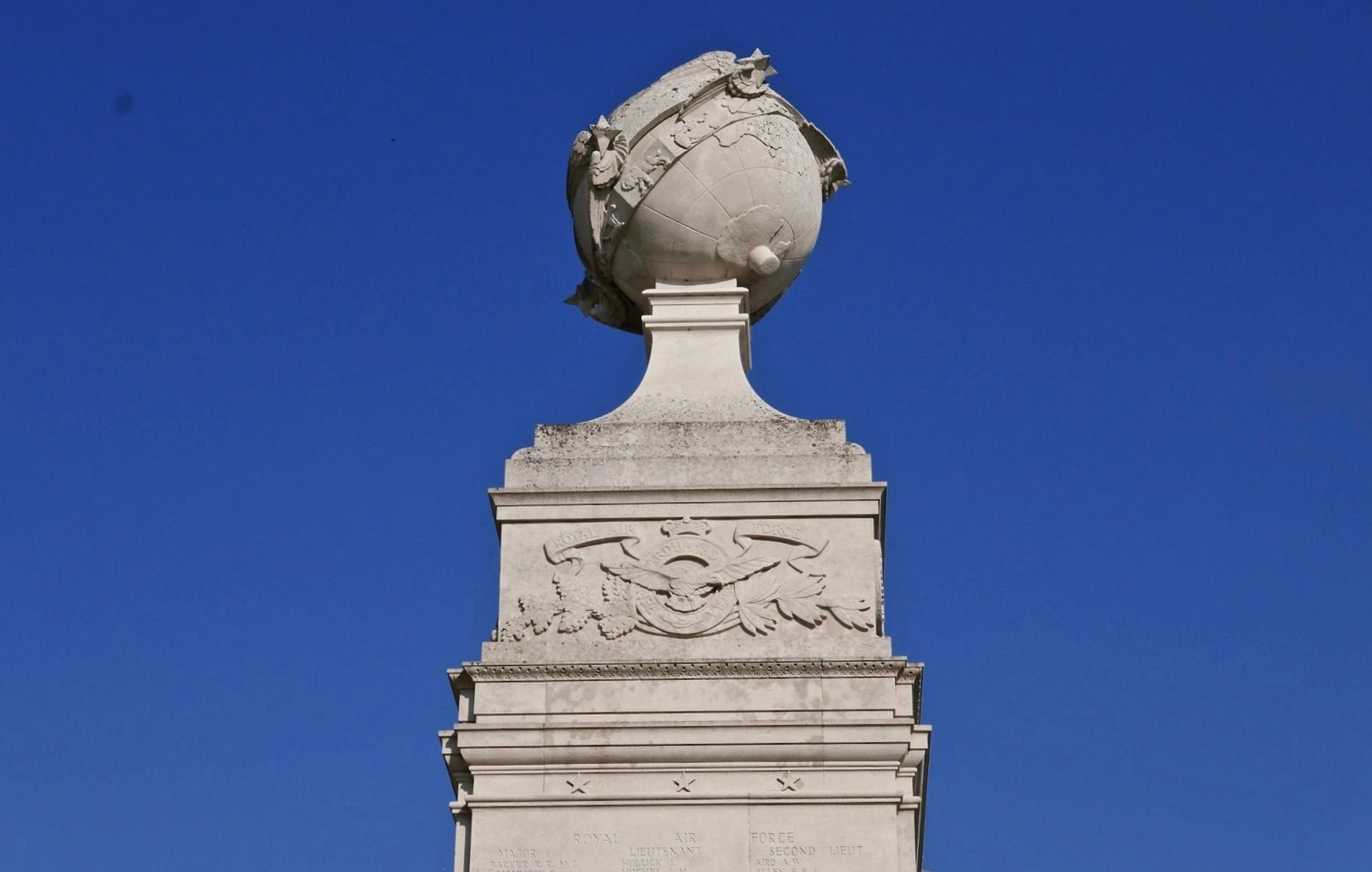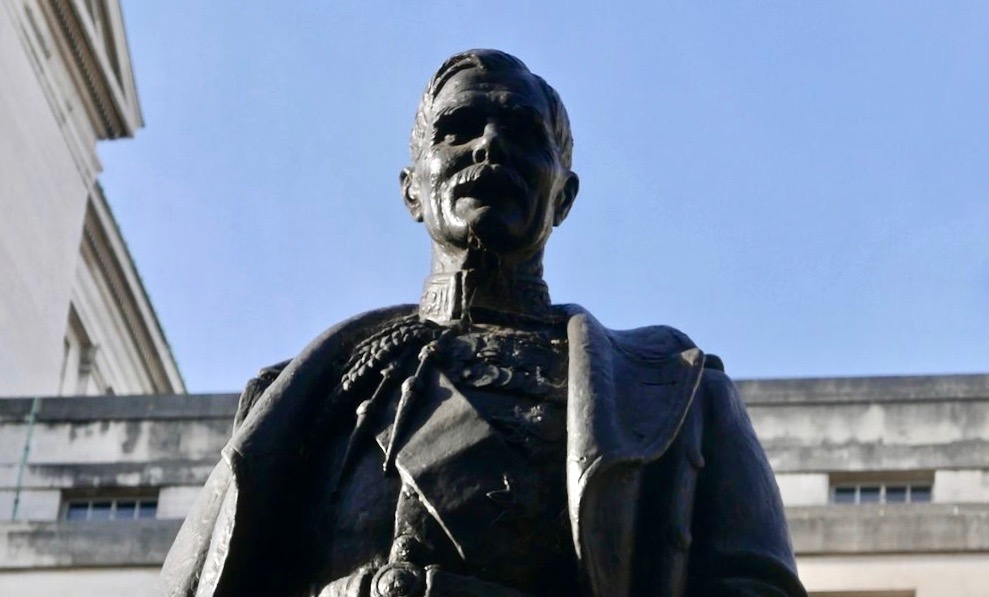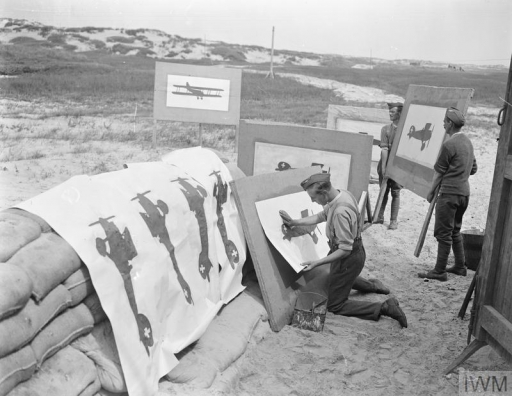Britain created the world’s first independent air force on 1 April 1918, merging its Royal Flying Corps and Royal Naval Air Service into a new branch of the armed forces, the RAF.
The move reflected the growing importance of air power in the First World War. Control of the skies was increasingly seen as a vital part of controlling the battlefield and taking the fight to the enemy.
Aviation had evolved from simple reconnaissance to a new means of attack with the development of fighters and larger bombers to strike at cities for the first time.
In 1914, barely more than 2,000 people were serving with the Royal Flying Corps and the Royal Naval Air Service. By 1918, the newly-formed Royal Air Force numbered more than 313,000. Over 9,000 members of the British air services were killed.
The creation of an independent air service, separate from the both the Army and Royal Navy, was recommended in a report by the South African soldier and politician, Jan Christian Smuts, in 1917.
 A Sopwith Camel fighter at the RAF Museum, Hendon, in 2014. This ‘King of the Air Fighters’ is now part of the museum’s permanent ‘First World War in the Air’ exhibition, which opened for the start of the WW1 Centenary (Photo: Centenary News)
A Sopwith Camel fighter at the RAF Museum, Hendon, in 2014. This ‘King of the Air Fighters’ is now part of the museum’s permanent ‘First World War in the Air’ exhibition, which opened for the start of the WW1 Centenary (Photo: Centenary News)
General Smuts, a member of the Imperial War Cabinet, was asked to review Britain’s air services and defences after the first raids on London by Germany’s new Gotha bomber planes. In a daylight attack in June 1917, 18 schoolchildren in the Poplar docklands district were among more than 160 civilians killed.
The six-page ‘Smuts Report’ noted: “The day may not be far off when aerial operations with their devastation of enemy lands and destruction of industrial and populous centres on a vast scale may become the principle operations of war, to which the older forms of military and naval operations may become secondary and subordinate.”
And commenting on the ‘snail’s pace’ of progress on the Western Front, Smuts suggested the decisive battle could take in the skies above the Rhine: “Intense pressure against the chief industrial centres of the enemy as well as on his lines of communication may form the determining factor in bringing about peace.”
The full import of such thinking would not become apparent until the Second World War.
The new Royal Air Force, constituted under an Act of Parliament, came into being on 1 April 1918. Ironically, the RAF was born just as that ‘snail’s pace’ in France and Flanders was ending. But air power would form a crucial part of the ‘All Arms Battle’ that summer and autumn, working in tandem with artillery and ground troops to deliver victory in the Hundred Days Offensive.
 The Arras Flying Services Memorial – at CWGC Faubourg d’Amiens Cemetery, Arras – commemorates almost 1,000 British and Commonwealth airmen who died on the Western Front and have no known grave (Photo: Centenary News)
The Arras Flying Services Memorial – at CWGC Faubourg d’Amiens Cemetery, Arras – commemorates almost 1,000 British and Commonwealth airmen who died on the Western Front and have no known grave (Photo: Centenary News)

Marshal of the Royal Air Force Lord Trenchard – first chief of the RAF. His statue overlooks the Embankment in London (Photo: Centenary News)
See also in Centenary News:
RAF Centenary – War Memorials listed for conservation.
The Duke of Edinburgh opens First World War in the Air at the RAF Museum.
The Good, the ‘Bad’ and the Ugly – British aircraft of 1917, discussed by CN contributor Matt Warner.
Source: Royal Air Force Museum – Smuts Report; Commonwealth War Graves Commission; Wikipedia/various
Images courtesy of Imperial War Museums © IWM Q 10367 (RAF Gunnery School); Centenary News (Sopwith Camel, Arras Memorial)
Posted by: CN Editorial Team
